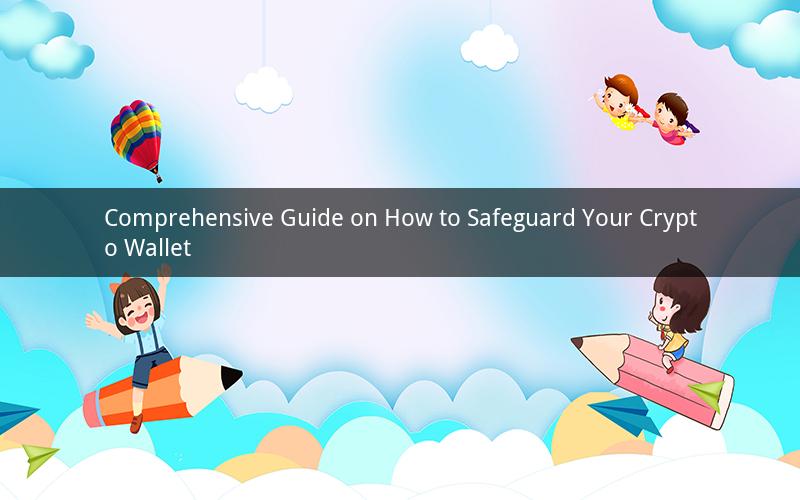
Introduction:
As cryptocurrencies gain popularity, the need to protect your digital assets has become more crucial than ever. A crypto wallet is a digital storage solution for your cryptocurrencies, and it is essential to understand how to secure it to prevent unauthorized access and potential loss. This article will provide a detailed guide on how to protect your crypto wallet, covering various aspects such as choosing the right wallet, implementing strong security measures, and staying vigilant against scams.
1. Selecting the Right Crypto Wallet
The first step in protecting your crypto wallet is to choose the right one. There are several types of wallets available, each with its own set of features and security levels. Here are some popular options:
a. Hardware Wallets: These wallets store your cryptocurrencies offline, making them less susceptible to hacking. They are considered the most secure option, but they can be expensive and less user-friendly.
b. Software Wallets: These wallets are available on your computer or smartphone and allow you to access your cryptocurrencies online. While they are more convenient, they are also more vulnerable to hacking and malware.
c. Mobile Wallets: These wallets are designed specifically for smartphones and offer a balance between security and convenience. However, they can be compromised if your device is infected with malware.
2. Implementing Strong Security Measures
Once you have chosen a crypto wallet, it is crucial to implement strong security measures to protect your digital assets. Here are some essential steps:
a. Use a Strong Password: Create a strong, unique password for your wallet and avoid using common phrases or easily guessable information.
b. Enable Two-Factor Authentication (2FA): Two-factor authentication adds an extra layer of security by requiring a second form of verification, such as a code sent to your phone, before accessing your wallet.
c. Keep Your Wallet Updated: Regularly update your wallet software to ensure you have the latest security patches and features.
d. Backup Your Wallet: Create a backup of your wallet's private keys or mnemonic phrase and store it in a secure location. This will allow you to recover your assets in case of a hardware failure or loss.
3. Staying Vigilant Against Scams
Scammers are always looking for ways to steal cryptocurrencies, so it is crucial to stay vigilant. Here are some tips to help you avoid falling victim to scams:
a. Be Wary of Phishing Attempts: Scammers often send emails or messages that appear to be from legitimate sources, asking for your wallet information. Always verify the sender's identity before sharing any sensitive information.
b. Avoid Public Wi-Fi: Public Wi-Fi networks are vulnerable to hacking, so avoid accessing your crypto wallet or making transactions on these networks.
c. Be Skeptical of Unsolicited Offers: Be cautious of offers that seem too good to be true, such as high-interest investment opportunities or free cryptocurrencies.
4. Educating Yourself on Security Best Practices
To effectively protect your crypto wallet, it is crucial to stay informed about the latest security threats and best practices. Here are some resources to help you stay up-to-date:
a. Online Forums and Communities: Join online forums and communities dedicated to cryptocurrencies and wallet security. These platforms can provide valuable insights and tips from experienced users.
b. Security Blogs and Websites: Follow reputable security blogs and websites that offer up-to-date information on wallet security and best practices.
c. Educational Courses: Consider taking online courses or attending workshops that focus on cryptocurrency security and wallet management.
5. Conclusion
Protecting your crypto wallet is essential to safeguard your digital assets. By selecting the right wallet, implementing strong security measures, staying vigilant against scams, and educating yourself on security best practices, you can significantly reduce the risk of losing your cryptocurrencies. Remember that the responsibility for protecting your wallet lies with you, so take the necessary steps to ensure the safety of your digital assets.
Questions and Answers:
Q1: Can I use the same password for my crypto wallet and other online accounts?
A1: No, it is crucial to use a unique, strong password for your crypto wallet. Using the same password across multiple accounts can make it easier for hackers to gain access to your digital assets.
Q2: Should I keep my wallet's private keys or mnemonic phrase in a digital format?
A2: It is recommended to keep your wallet's private keys or mnemonic phrase in a physical format, such as a printed copy or a secure storage device. This will help protect against digital loss or corruption.
Q3: How often should I update my crypto wallet software?
A3: It is advisable to update your crypto wallet software regularly, especially when new security patches or updates are released. This will ensure that you have the latest security features and protections.
Q4: Can I use a mobile wallet on a public Wi-Fi network?
A4: It is not recommended to use a mobile wallet on a public Wi-Fi network. These networks are vulnerable to hacking, which can put your digital assets at risk.
Q5: Is it safe to share my wallet address with others?
A5: Yes, it is safe to share your wallet address with others when making a cryptocurrency transaction. However, never share your private keys or mnemonic phrase, as this can compromise your wallet's security.